Melissa McGrain, Pittsford, New York (2019)
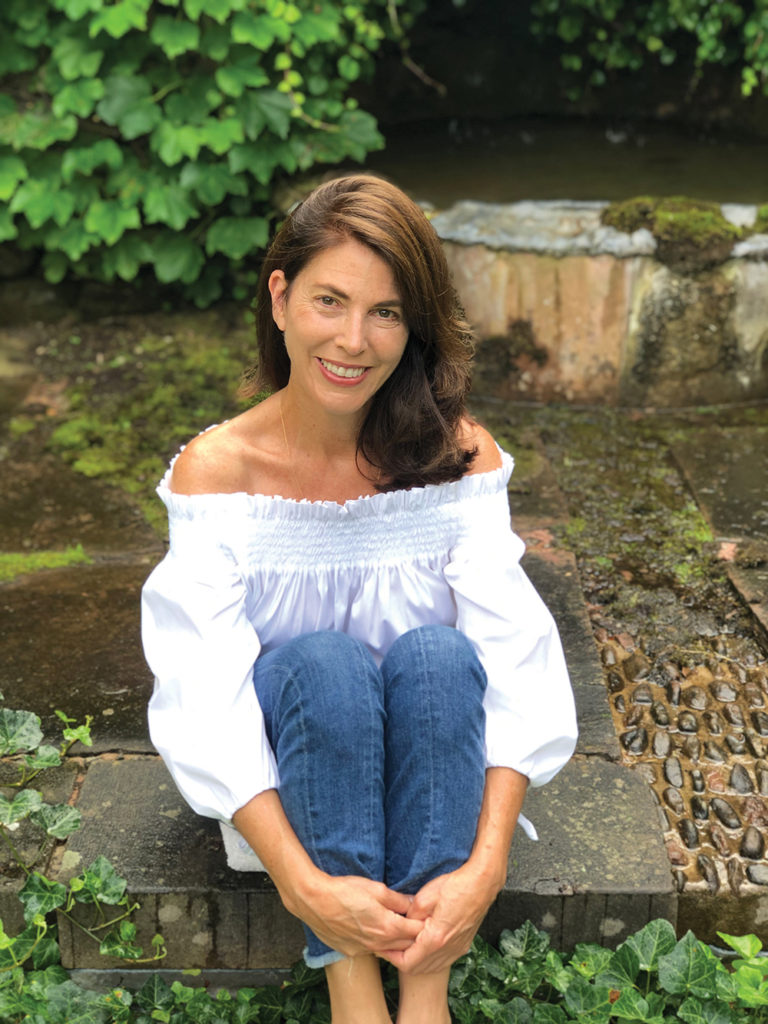
“Do you garden?” asked Nancy Turner hopefully. At the time, Melissa McGrain did not. But it was a six-acre garden that had drawn her and her husband, Andrew Stern, to the countryside of Pittsford, New York, and she fully intended to learn. And learn she did. Stately in its maturity, the garden McGrain has tended for nearly twenty years today evinces a sense of permanence and inevitability—the result of a superb design, the passage of time, and sustained, informed care over many decades, on both her watch and that of Nancy and her husband, Richard Turner, who commissioned the garden from the noted landscape architect Fletcher Steele in the 1960s.
The Turners bought the 1840 Greek Revival–style house in 1956 with the intention of moving it from the outskirts of Henrietta, New York, to a new neighborhood in the village of Pittsford. The eighty-ton structure was sawn in half and strapped to two enormous trailers for the three-and-a-half mile journey across cornfields. Despite the overland route (devised to avoid power lines), one line was severed, and baseball fans who had been engrossed in a World Series game were suddenly blacked out. Neither did the weather cooperate; heavy rains saturated the fields and the caravan was repeatedly mired. But once in place, on a site selected by the Buffalo-based landscape architect Katherine Wilson Rahn, the house seemed always to have been there. Rahn laid out a long, straight drive bordered by sugar maples, leading to a forecourt with a circular turnaround. Steele, who had moved back to his ancestral home in Pittsford, entered the picture soon afterward.
Richard L. Turner, a lawyer and business executive whose passions included American antiques and historic preservation, approached the renowned landscape architect about the job in 1964. Steele had recently closed his Boston office to retire to his childhood home in Pittsford, and, at first, he declined. But Dick and Nancy proved persuasive, and a fruitful relationship between the young couple and the sometimes crotchety but brilliant designer began.

Steele’s bilaterally symmetrical plan was inspired by classical French examples that he considered to be the finest achievements of the art—Vaux-le-Vicomte, Sceaux, and Versailles. The Turners’ garden would be more intimately scaled than these, but it would achieve its own sort of grandeur as a result of the monumental simplicity of the French style. The layout strikes a successful balance between geometric formality, on the one hand, and rich complexity on the other, achieved primarily through the imaginative and varied plant palette. The garden’s major spatial component is the north vista, a large outdoor room defined by a rich mix of overstory trees, midstory flowering trees such as hawthorn, dogwood, and shadblow, and large shrubs, including a collection of vintage roses.The vista culminates in a circular reflecting pool of deepest blue and apse of towering cedar. The drop in elevation is negotiated over three gradually narrowing terraces. As a result, the three-hundred-foot distance appears greater than it actually is. Steele frequently employed forced perspective in his designs, another inspiration from the French.
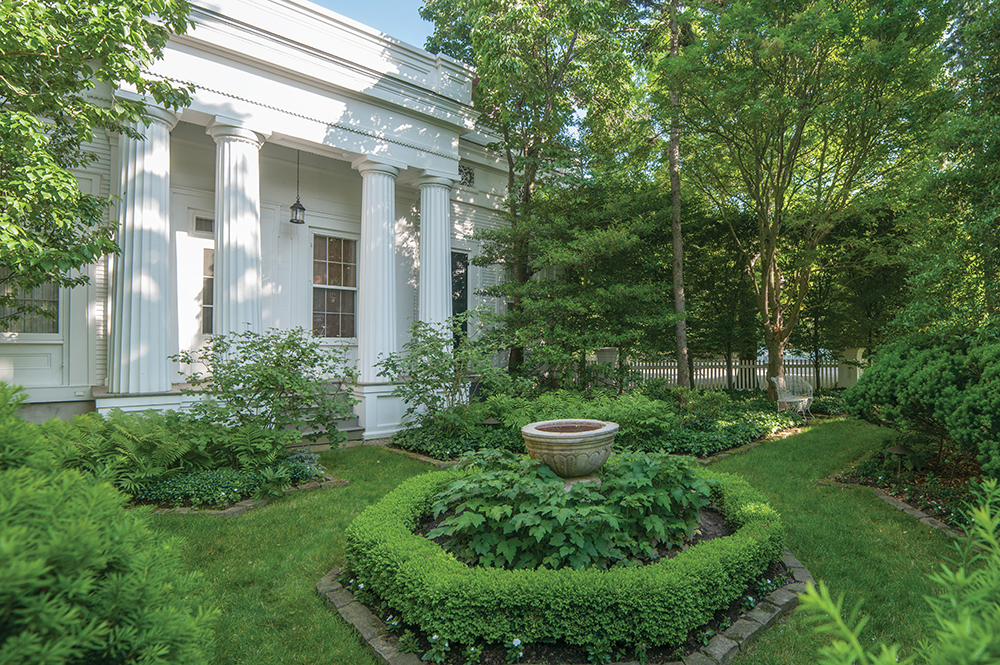
Dick Turner’s sudden, premature death in 1986 left Nancy with the monumental and sometimes lonely task of maintaining both the house—which by then was furnished with museum-quality antiques—and the rapidly maturing garden. She rose to the challenge with a sense of determination nurtured by vivid memories of her life there with Dick and her own increasing passion for the beauty and historical importance of this place. Over the years, her sophistication had grown through her contacts in the Garden Club of America (where she served as a vice president) and her increasing involvement with landscape history and preservation.
As she learned more about Fletcher Steele, Turner’s resolve to respect his original design deepened. But she did not hesitate to develop areas he had not addressed before his death in 1971. She commissioned an indoor swimming pool, housed in a conservatory-like building, where she swam each morning. And she added a birch allée in an undeveloped section of the property, designed by Carolyn Marsh Lindsay, a Rochester-based landscape architect. (The feature was inspired by the birch allée Turner had seen at Stan Hywet Hall in Akron, Ohio, designed by the landscape architect Warren H. Manning, Fletcher Steele’s mentor.) In the lithe, determined figure of Melissa McGrain, Nancy Turner may have recognized aspects of her younger self.
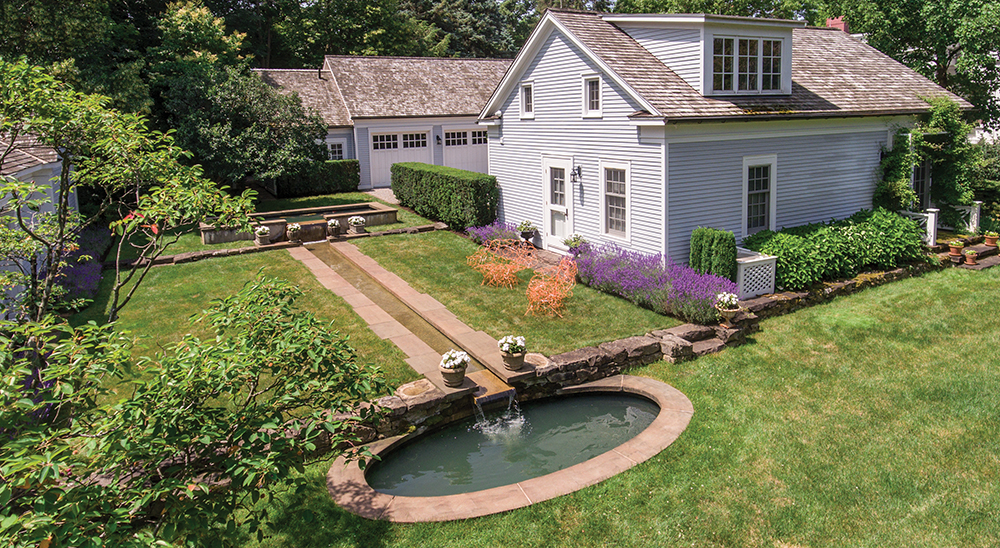
When McGrain and Stern decided to move to Pittsford in 2001, they contacted a real estate agent for help in locating a sleek, modern house. “We were looking for a design similar to the Philip Johnson Glass House in New Canaan, Connecticut,” McGrain recalls. “I also wanted to be able to plug my vacuum cleaner into a single outlet and vacuum the entire house!” On seeing the 1840 Greek Revival building at the end of the drive, she was skeptical, but one walk through the garden changed everything. “As I explored the grounds for the first time, I knew deep in my heart that I belonged here. Simply, I fell in love.”
McGrain and her husband focused first on the house, which had over time developed structural issues as a result of the 1956 move. Subsequent waves of intervention followed, each of them a response to the new lives unfolding there. The former garage (originally, the carriage house) was transformed into a guesthouse for overnight visitors, and a new garage was constructed, connected to the house by a glassed-in walkway. The arrangement effectively created a formal courtyard, one wall of which supports four large, espaliered pear trees. The architect R. Jon Schick based his design for the new structures on details of the original carriage house—from the soft gray clapboarding to the pitch of the cedar-shake roof. It was a few years before McGrain was able to turn her full attention to the garden. She brought to this task a sense of almost divine purpose and extraordinary administrative capacity.
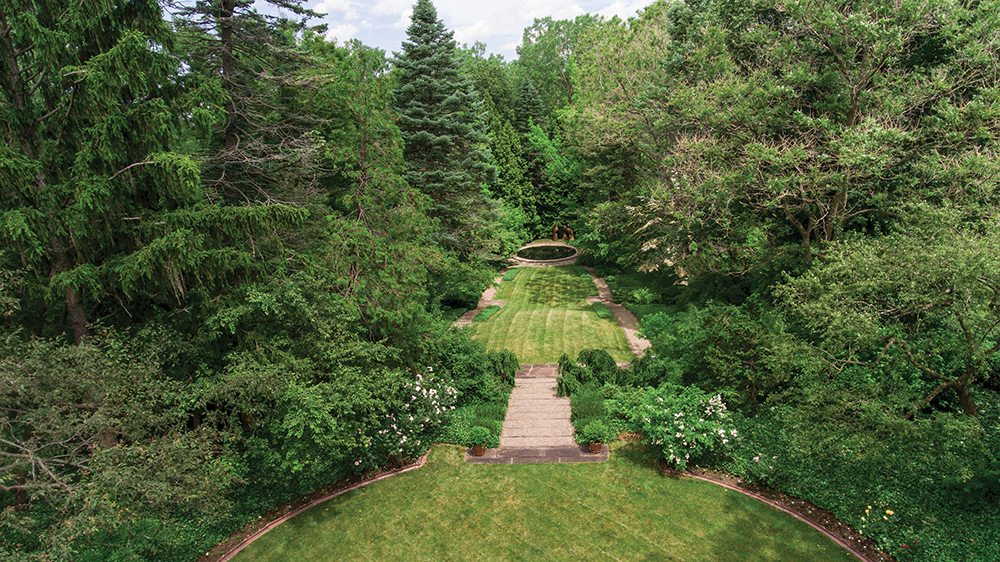
Working from Steele’s original plans and plant lists, archived in the SUNY College of Environmental Science and Forestry in Syracuse, she had new plans drawn, based on a zone system that her gardening staff still uses. She worked assiduously to clearly define the edges of the various garden rooms. (McGrain traces her sensitivity to contour and spatial flow—hallmarks of Steele’s design approach—to her years as a figure skater.) Trees that had been damaged or weakened by age were replaced. Steps and walkways that had been subjected to decades of harsh upstate New York winters were repaired. A new irrigation system was installed, and Steele’s unusual clay-tile runnels on the rose terrace were brought into use for the first time. They had always leaked—Steele had blamed poor workmanship on the part of the masons who built them.
McGrain continues to work in the garden every day alongside her carefully selected team, who have been with her for fifteen years. She keeps meticulous records and uses these notes to stay on top of regular tasks, such as edging, pruning, watering, and weeding. Systematic in her methods, McGrain is passionate and obsessive in her dedication to caring for this land and the plants that grow there. Up at sunrise, she begins the day with a walk around the grounds, notebook in hand to record issues in need of immediate attention. She rarely leaves the garden before dinner.
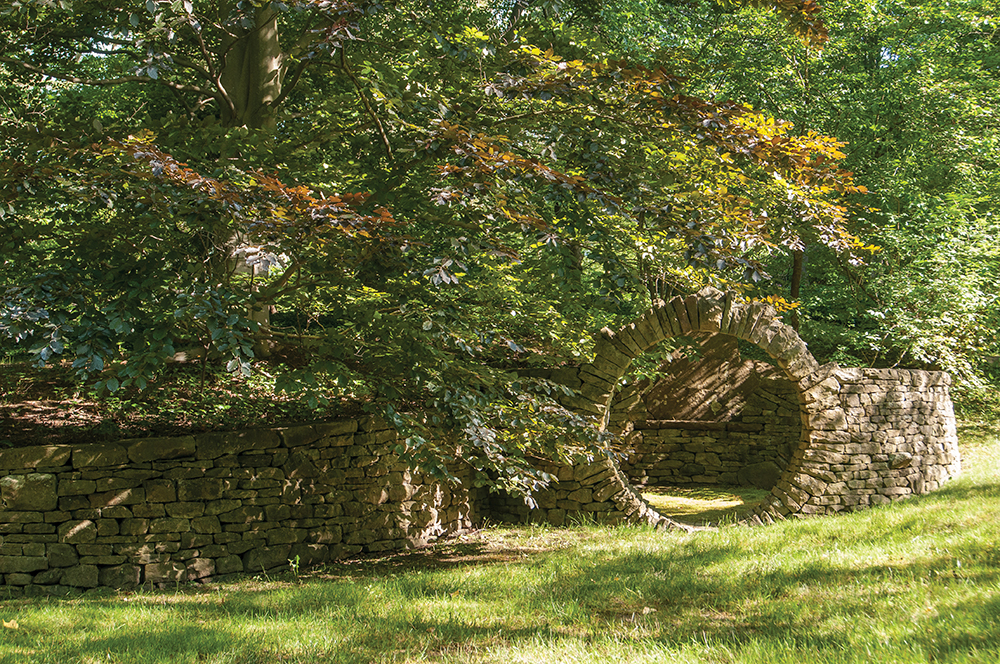
As did Nancy Turner, McGrain has added several imaginative new garden features to the property. Some of the most striking of these were created by Chuck Eblacker, a member of the Dry Stone Walling Association of Great Britain, who studied with the renowned stoneworker Dan Snow in Vermont. Eblacker’s first project was a retaining wall to halt erosion that was threatening a venerable copper beech. Subsequent, less utilitarian projects include a walled vegetable garden and potting shed and a moon gate that opens to a small circular, stone-walled room used for meditation. All the stonework is dry-laid, held together by gravity and friction.
A more recent addition is an architectural feature that includes a koi pool, sluiceway, and waterfall, sited in the area of the former vegetable garden. The stone-lined sluiceway was designed to echo Steele’s use of Medina stone in other areas of the garden, and the forced perspective recalls the narrowing terraces in the main vista. McGrain located the stones herself on excursions through the upstate countryside, where the round cobbles were often used in house construction. (The distinctive red sandstone was discovered during construction of the Erie Canal.) The koi are beautiful and also surprisingly large, having grown to fill the capacity of the six-foot-deep pool.
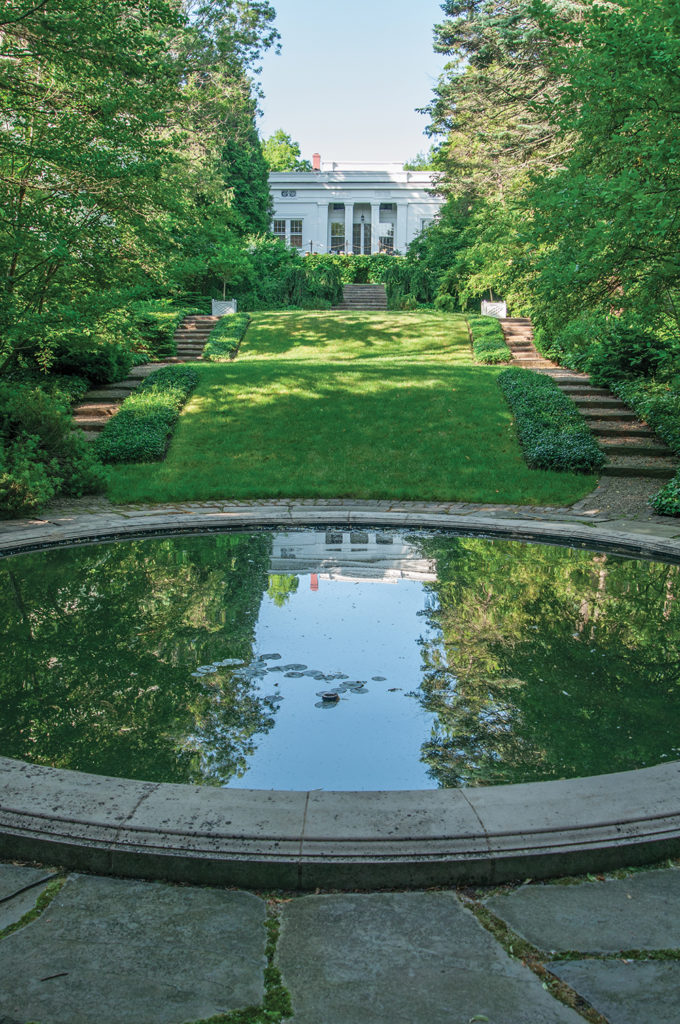
One of the most interesting resonances with Nancy Turner’s era of stewardship is the recent addition of a group of monumental bronze passenger pigeons at the edge of the reflecting pool. The sculptures are the work of Melissa’s brother, the artist Todd McGrain, who created them in a limited edition as part of The Lost Bird Project, an initiative memorializing five North American birds, all now extinct. Andrew Stern is the director of The Lost Bird Project, the eponymously named nonprofit organization whose mission is “connecting more deeply with the earth through art.”
Nancy Turner searched for years for a sculpture to place in the spot behind the reflecting pool the pigeons now inhabit. Steele had repeatedly suggested that the primary focal point in the vista needed the right “something.” After trying a pair of nineteenth-century marble figures and finding them too delicate in scale, Turner purchased a large metal sandhill crane by the sculptor Mary Taylor and was pleased with the effect. But before she moved, she donated the sculpture to the Seneca Park Zoo, so that when McGrain and Stern arrived, the pool was once again unattended, and the search began anew. The pigeons were the perfect solution. An uncannily lifelike, almost numinous presence in the garden, the gentle birds express something of the deep, unchanging spirit of this place, as they offer a vivid reminder of the redemptive power of art.
—Robin Karson is executive director of LALH.